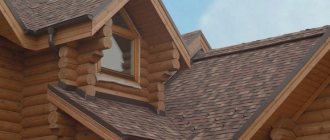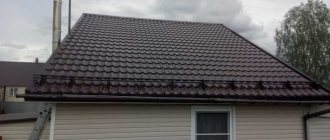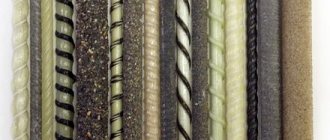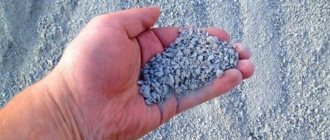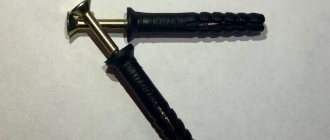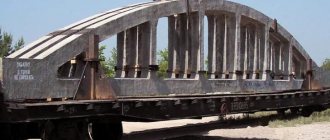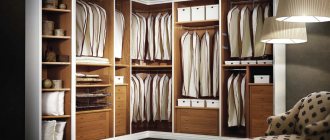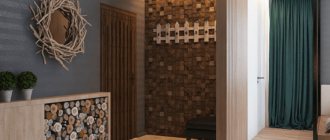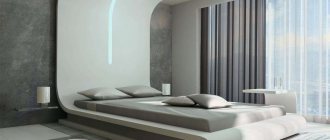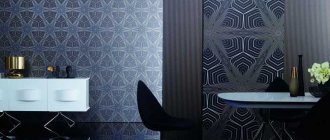Many people associate the flat roof of a house with the urban landscape. However, there are many low-rise suburban buildings with rectilinear shapes and flat roofs - expensive private houses. Both cases of using a direct configuration can be considered classic. An important feature of flat roofs is their arrangement to withstand stagnant masses of water and snow. Since the purpose of the roof is also important, there are many more options for the arrangement and combination of different materials than the main types of roofing. Some types of flat roofs appeared relatively recently, for example, inversion, and have already managed to occupy their niche. There are also ready-made designs of houses with a flat roof. They incorporated several aspects regarding materials, amenities, shape, color and optimal placement. Flexible pricing should make choice easier.
Peculiarities
A distinctive feature of houses with a flat roof is the need for high-precision calculations to ensure the reliability of the structure. The roof of the building should be finished with modern insulating materials - polymer coatings, membranes, mineral wool products. Residents will need systems for organizing the drainage of melt and rainwater, and in most cases, special means for heating the roof. It is important to provide easy access to the roof for cleaning the stormwater system, removing snow and debris, technical inspection and repair work. For flat roofs, special GOST and SNiP standards apply. According to technical regulations, it is impossible to make a perfectly flat surface of a house. One of the reasons for the ban by regulatory authorities is the complexity of care. The slope must be at least within 1-5%, and if the roof is not in use, the mandatory figure can increase to 15%.
Before designing a structure with a flat roof, you should consult with an experienced architect!
Pros and cons of a flat roof
The undeniable advantage of houses with a flat roof is their appearance. Modern design has found many uses for such roofing. With the same area for construction, equal costs for materials and technology, erecting a building with a flat surface will cost less than with a sloping surface. The flat roof space can be used effectively. Summer and sports grounds, a swimming pool are examples of standard solutions for its arrangement. The disadvantages are, first of all, the absence of a large potential part of thermal insulation. Precipitation will have a strong impact, so enhanced waterproofing and a powerful water outflow system will be needed. Removing snow from a roof area can take a lot of time, and the same goes for clearing debris. However, architects are working hard to improve wastewater treatment systems.
Where to start designing
The goal of designing any roof is to correctly select and calculate the amount of materials needed , as well as to clearly express what load all elements involved in the structure will bear.
A project is a plan. The project plan should reflect each stage of work.
It is most convenient to carry out the project in a special program , which will help not only to display the future structure, but also to help calculate the dimensions of the materials and their load.
Design is carried out step by step:
- A sketch of the roof is being made . At this stage, the color and geometric shape of the future roof are approved, and the load of materials is calculated with indicators of the roof dimensions, taking into account regional atmospheric influences. It should be remembered that snow loads on a flat roof are more significant than on pitched structures ;
- a calculation is made of the cross-section of beams and the lengths of the boards of the rafter system . It is very important to correctly determine the pitch of the sheathing, since it is the rafter structure that can withstand the entire load;
- A schematic drawing of the roof is being made . At this stage, the location of all additional elements of the roof structure is taken into account.
After completing the roofing drawing, they begin to draw up an estimate - the costs of materials, structural elements and tools (if necessary) that are required to complete the work on arranging a flat roof.
IMPORTANT!
When designing a future roof, you should pay special attention to ventilation passages and a high-quality drainage system.
You should not get carried away with the decorative features of these elements; the most important thing is to pay attention to their functional features.
Roof project
Two-story project
Types of flat roofing
The most common type of roofing on the farm is non-exploitable. Strength in this case does not play an important role, because the main task is to protect the premises. Insulation and barrier materials may be used with less than optimal properties. To service the roof, walkways or paths are made along the beams. A serviceable roof is a covering that provides a solid foundation for placing various objects. It is suitable for installing swimming pools, lawns, dance floors, etc. The design feature consists of covering the reinforced concrete surface with a water barrier, insulation and vapor barrier, and then installing a screed. The surface is then covered with finishing materials, such as tiles or boards. The third type of flat roofs is inversion. All layers of waterproofing with this option are placed under the insulation. You can also place various objects on the surface. Subtypes of unused roofs:
- membrane;
- liquid polymer;
- bitumen and polymer-bitumen.
Mansard roof in modern construction
A mansard roof can also cover a modern building. Increasingly, designers are using this roof structure when creating modern single-family and multi-apartment buildings. In both cases, the goal is to create a comfortable living space in the attic.
Mansard roofs on modern building blocks look slightly different than their historical counterparts. They usually have a simpler design and are covered not with tiles, but with modern materials, such as sheet metal panels. Windows and dormer windows installed on slopes, characterized by simplicity and minimalism, also have a different shape. The latest materials and technologies make it possible to install even panoramic windows in such roofs. Which looks very attractive and provides even greater functionality to the attic
Mansard roof design
A mansard roof is a roof with two or more slopes. The upper part of the slope is connected to the lower part by a cornice or step. The design of such a roof is quite complex. The roof truss is usually a purlin-and-tick type. In nature, there are lower and upper farms.
Attic diagram
The top uses rafters, stiffening tongs, a support knot and purlins (foot and ridge). On the other hand, the lower structure consists mainly of posts and struts connected by clamps. Today, for the construction of such roofs, prefabricated load-bearing elements are often used, which greatly facilitates the work. The biggest challenge for roofers is to properly insulate an attic roof. Especially on slope turns, through which cold and moisture can penetrate. Insulation of a roof of this design involves the use of standard materials: mineral wool, polystyrene and vapor barrier film.
It is worth knowing that there are two types of attic roofs:
- French - traditional design. Has the top sloped slightly at an angle of about 30 degrees, while the bottom slopes up to 60 degrees.
- Polish - its design consists of a slope with a similar angle of inclination.
The slope of the slope best indicates the cross section of the roof. Sometimes it is an almost flat roof, with a minimal slope at the top to ensure free flow of rainwater.
Hip mansard roof
The attic roof can be gable or hipped. The latter type of roof, consisting of four slopes, is more common. Some projects also provide for a multi-pitched roof if the building body is more elaborate and complex. A gable mansard roof is assembled easier, faster and cheaper.
Flat roof base
Its role is usually performed by reinforced concrete slabs, but sometimes metal profile structures are used. Two options for concrete products can be used: monolithic and hollow. The coating is done in several stages. First, a heat-insulating material, a vapor barrier and a waterproofing layer are placed on the supporting base to protect against precipitation, including the vapor barrier. The number of layers of the roofing pie and the choice of materials depend on the type of roof planned. Each component is of equal importance, and if performed poorly, it can ruin the entire structure. After familiarization with the technological and operational properties (aesthetics, costs of installation and maintenance, water resistance, fire resistance), a decision is made on the design and its features for the selected type of roof.
Roofing pie
To ensure a secure roof, you need to arrange materials in layers, placing them one above the other like layers of a pie. This arrangement is very important and is considered correct. The base is made of concrete or professional metal, as they have a high margin of safety.
After the base there are layers: thermal insulation, waterproofing and vapor barrier. Any building material that the owner chooses can be used as a roof; the main thing in this case is to take into account its characteristics and properties. You also need to take into account the functional load on the roof, taking into account the fact whether it will be actively used or not. In general, with help. With a flat roof you can create an original house that will be reliably protected from the influences of the weather for a long period of time.
Materials for roofing pie and types of flat roofing
Standard flat roofs consist of concrete slabs with a vapor barrier placed on top. The latter is designed to protect the insulating layer from moisture penetrating from the premises. Vapor barrier is achieved using a fiberglass-reinforced bitumen membrane or vapor barrier film. The vapor barrier layer must be laid so that near the edges of the roof it rises to the height of the insulation. As for insulation, 1-2 layers are usually applied. They are covered with fused materials. Otherwise, the composition and structure of the roofing cake differs depending on the type of coating. The installation of a green roof is carried out using techno-elastic materials and a needle-punched membrane. Thermal insulation and geotextile layers are placed at the top of the inversion coating pie to reliably protect the waterproofing. The “breathable” option consists of uniflex materials and aerators on the surface. The used roof is made as durable as possible, with a decorative top layer. List of materials used for different types of roofs:
- insulation (including mineral wool);
- geotextiles;
- drainage material;
- EDPM and PVC membranes;
- uniflex;
- special 2-sided tape;
- technoelast.
Inversion roofing
Not so long ago, flat roofs had a significant drawback - the last layer, waterproofing, quickly collapsed. This process is facilitated by ultraviolet rays, frost, heat, rain and snow. The solution to the problem was the invention of an inversion type of roofing. The cake of this coating consists of 7 layers. At the base there is concrete, then there is a primer, and even higher there is waterproofing. Next comes the turn of thermally bonded geotextiles. The next layer is thermal insulation, and in this role you can use extruded polystyrene foam that does not absorb moisture. After this, geotextiles are placed again. The last layer is protective, often made in bulk. Thanks to the above features, this roofing device has many advantages. The waterproofing is well protected by other layers and is resistant to destruction. Placing the insulation on top helps avoid condensation.
Breathable roof installation
The protective qualities of the roof suffer due to the humidity of the heat insulator. As a result, cracks and bubbles form, especially in the summer. Moisture can also be in the screed and concrete base. All this will sooner or later end in peeling. In a “breathable” roof, moisture evaporates easily. Ventilation is carried out using roof aerators. Tightness is ensured by surface-surfaced materials. A breathable roof is based on a floor slab and a vapor barrier on top of it. Then they put insulation, cement-sand screed and uniflex vent material. The sixth and seventh layers are SBS binder and uniflex EKP (TKP). The structure is fastened with self-tapping screws. Weathervanes are installed on the surface; they are then filled with gravel.
An important advantage of this coating is the possibility of installation on old flooring.
Operated roof
This type of roof allows you to implement ideas for converting free space into a place to relax. This is a good example of rational use of territory. The technology for installing an existing roof requires a base of reinforced concrete slabs, a screed and a vapor barrier layer above. Then comes the drainage material and insulation. The next layer is geotextile. Next, the sand-cement mixture is placed, but plastic holders can also be used instead. At the very top you should lay a terrace covering, for example, decorative paving slabs. The top coating should be made as durable as possible. An important advantage of exploited roofs is the ability to use the area to accommodate target areas and various devices. This is a good “field” for implementing design solutions.
Green roof installation
The roof can be decorated with lawns and flower beds with rich vegetation - the result is a decoration for the entire house as a whole. However, in order for this “creation” to be implemented in practice, a lot will need to be taken into account at the design stage. The technology for laying a “green” roof pie involves the presence of a reinforced concrete base. Expanded clay is placed on top of it. Next comes a cement-sand screed and a bitumen primer. Two layers of technoelast are laid on top: EPP and GREEN EPP. Insulation and two levels of thermally bonded geotextile are installed on needle-punched textiles, between which drainage made of crushed stone or gravel is placed. Top geotextiles are needed to protect against soil washout by heavy rains. Then soil is poured and plants are planted. The area is properly landscaped and decorated.
Roofing installation made of PVC and EDPM membranes
The polyvinyl chloride (PVC) membrane eliminates the need for additional waterproofing. It is thermoplastic: to seal the seams, exposure to hot air is sufficient. EDPM is a durable and elastic material that is not afraid of the sun. At the base of the membrane roof, both concrete slabs and metal profiles are suitable. The base is covered with special double-sided tape. A vapor barrier is installed above. It is better to organize thermal insulation using 2 layers of mineral wool insulation. A hard or combined version of this material is suitable. A polymer membrane covers the layers of the roofing cake. Telescopic fastenings are made on it. Roofing made from PVC and EDPM membranes will last for many years, withstanding low and high temperatures. The material is also very light, so installation will be easy. If repair work is carried out, the properties will remain at the same level.
Roof structure
A flat roof is a structure that does not have an angle of inclination, since it simultaneously and evenly rests on all the load-bearing walls of the house along its entire perimeter. The design of a flat roof consists of several layers of waterproofing; they must be laid on previously prepared soil (base). You can install a flat roof yourself, using the method of laying layers, after which they need to be poured and glued to each other.
The sequence of layers in the roofing pie:
- Base. Naturally, the first layer will be the base on which all other layers will be laid. Concrete slabs, corrugated sheets or wooden beams that have previously undergone special training act as a springboard for labor actions. After this, a primer is applied to the base, thus trying to smooth out all the roughness and irregularities, as well as increase the adsorption of the material.
- The start has been made, now we move on to the screed. To do this, you need to take a solution of cement and sand and apply it as a surface-leveling layer. Using a screed, the roof is sloped; slopes are created at the points of the water intake funnels.
- Vapor barrier layer. It is necessary to use a diffuse membrane that can become a barrier to water vapor and condensate. It is best to reinforce the vapor barrier with fiberglass, which can make the material more durable and stable.
- Thermal insulation. Glass wool, slag wool or expanded clay are used as insulation. This layer needs to be given special attention because the level of comfort and temperature in the house will depend on it.
- Waterproofing. Often, bulk or rolled polymer materials are used, which need to be laid in several layers.
The quality of flat roof installation directly depends on what the weather will be like at that time. Experienced craftsmen advise carrying out all work in warm and dry weather. In this case, the installation will be correct and much faster, because you will not have to constantly heat the bitumen materials.
Drainage system
The service life of a flat roof depends directly on drainage. To protect materials from stagnation of water masses, it is necessary to equip the house with one of the systems - external or internal. To prevent the accumulation of snow and ice in the drain, it is possible to use heating in the form of a heating cable. One way to remove excess water from the roof is with special drainage funnels. Thanks to the provided slope, water flows will enter these devices and then be diverted away from the building. The top of the funnels is equipped with a grid to prevent relatively large objects from entering. It is important to take care of the reliability of waterproofing at the junction of fixtures and roofing. This protects the roof, façade of the house, and foundation from possible erosion. It is necessary to install nets in the drain to catch debris.
Flat roof garage design
The construction of a space such as a garage often involves a flat or slightly sloped roof. It is best if the surface has a slope of 2–4°, which improves sediment drainage. Reinforced concrete slabs are used as the base, which can easily be laid on brick or block walls.
A flat garage roof must have a high-quality waterproofing layer
If the garage structure is made of timber, then a flat roof can be easily made from corrugated sheets laid on wooden beams. Heated rooms require the use of insulation.
When choosing a garage project, you should consider the following points:
- area of the garage;
- presence or absence of insulation;
- the presence or absence of internal partitions in the garage;
- convenient arrangement of the area around the garage.
Video: flat roof installation
Photo gallery: flat roof options
A complex flat roof may have unusual exit designs
The roof in use is often a recreation area
Operable roofs are practical in warm regions
Finishing the roof with paving slabs makes the surface protected from precipitation
Flat roofs are also optimal for two-story buildings
Complex structures require procedural design and accurate calculations Multi-level structures are difficult to construct, but practical to operate
A flat roof is a simple structure that requires proper installation. Therefore, the design must take into account all the important points, construction rules and operating features of such a roof.
House projects
You should familiarize yourself with the popular options for houses with a flat roof: 1. One-story. 2. Two-story. 3. Wooden. 4. With a garage. The construction of houses with flat roofs has long been a hallmark of urban construction. At the same time, the trends of recent decades in many countries, as well as the emergence of a new generation of durable waterproofing materials, have led to the fact that flat roof options have become widely used on low-rise buildings. To accommodate the snow load, a concrete, metal or reinforced concrete floor is provided. This base is more reliable than its counterpart with a sloping roof. In appearance, these are laconic, completed buildings. Choosing a house design is quite simple: the larger the structure, the better. However, due to different financial aspects, it is necessary to compare different options. Projects with a finished garage, one-story houses with enough space for several people will save a considerable amount. Wooden options can “win” due to their appearance.
One-story houses
Options with one floor are intended mainly for small families. In this case, the absence of a second floor should not affect the level of comfort. Moreover, its absence can be compensated for by a larger area of the building, which will allow you to conveniently place everything you need on one floor, without unnecessarily saving space. It is impossible to equip a flat roof with significant devices in cold weather, so you will have to look for another place for them, which is difficult for a 1-story building. The chimney and ventilation system shaft are brought to the roof, and excess moisture is eliminated through a drain on the facade. Thanks to these devices, the appearance of the building will not be spoiled. The owners of a 1-story house should consider various options for expanding the living space, and for this they will need to reserve part of the territory near the house. It is convenient to add a terrace and a garage to the building on one floor.
Two-story houses
For two-story buildings, the typical solution is to place the living room, hallway and kitchen (dining room) on the first tier. On the second floor there is space for an office, bedroom, recreation area with a balcony or terrace. It is advisable to build a canopy over these areas. Since an open roof cannot be used effectively in winter, a large glazed balcony/terrace would be a very good option. In general, a 2-story building should accommodate all zones and necessary amenities. In a 2-story house with a flat roof, the drainage system, chimneys and ventilation pipes are combined into 1 block and placed inside. The garage must be equipped with a separate ventilation duct. This two-story building includes all the advantages of country houses and is intended for year-round use. Buildings of this configuration are usually painted in light colors.
Wooden houses with a flat roof
A building made of timber or logs is a durable, environmentally friendly and warm structure. A flat roof in this case is made provided that the ceiling of the upper floor and the structures of the last crown are treated with antiseptics and fire-retardant impregnation. Drainage is arranged using pipes in the internal and external parts of the building. A log cabin with a flat roof fits perfectly into the forest landscape. For frame buildings, the strength of the ceiling of the last floor is important. It is carefully sealed, since frame elements can deteriorate when in contact with moisture, and this, in turn, will affect the stability of the entire structure. Frame houses are built quickly and for relatively little money, but are “demanding” in terms of ensuring waterproofing of the ceiling and its strength. Arrangement of a flat roof in a frame house involves scrupulous calculations of the ratio of snow load to the load-bearing capacity of the structure and strength.
House with garage
The layout of a building with a flat roof is influenced not only by the location of drains, chimneys and staircases, but also by the location of the garage. The flat roof configuration simplifies the addition of a garage space. In the case of a one-story house, it will be even easier to build on than with two floors, and just as good in terms of architectural harmony. The top of the garage can be used as an extension of the roof or an additional surface, for example, under a balcony in the case of a building with 2 floors. The interior of the room must be equipped with a separate ventilation pipe. Only flat garage modifications will look good with a flat building, especially since they are popular nowadays. Projects with garage premises provide additional options for their use. This is a great place for a workshop and old items. Next to the garage, it is worth setting aside a reserve for a new building for another car.
The garage roof should not differ significantly in strength from the roof on the house!
Rafters
These elements are made from pine, at least second grade. The cross-section and length are chosen depending on the design of the structure.
The simplest option is, when viewed from the pediment, a rectangle lying on the ceiling of the upper floor. On the sides it is adjacent to triangles, the acute angle of which is located at the top. An isosceles triangle lies on a rectangle.
Important! Before you begin construction, draw up a detailed drawing of the attic roof, and strictly follow it during the construction process.
What style to decorate a house with a flat roof
It is preferable to choose among the directions that emerged at the end of the 20th - beginning of the 21st centuries:
- constructivism;
- high tech;
- biotech;
- minimalism;
- postmodernism;
- loft.
A flat top farmhouse looks good in many modern styles. Smooth lines often dominate on buildings, but smooth edges have also not lost their relevance and are even beginning to “win back” positions. Construction of houses with rectangular shapes is not only a fashion for external simplicity of design, but also a way to reduce the construction budget by up to 2 times. Most private buildings with a flat roof are characterized by high windows, sliding door options, panel elements, a large number of mirrors and lighting fixtures. Modern styles have a lot in common, as well as some features unique to a specific direction. Minimalism, for example, creates a feeling of lightness and is valued for its simplicity of design. Biotek is an expensive, difficult to implement option. High-tech adds several creative ideas to the straight lines. Constructivism is distinguished by rigor and a desire for thoroughness. The loft stands out for its modern flavor and various combinations.
Cottage
A small family with an average income can comfortably accommodate in a modern one-story compact house, the roof of which serves as an addition to the total area. Panoramic windows, a large kitchen, and the orientation of living spaces to the south and southwest keep the house warm and cozy.
The slight slope of the roof ensures the drainage of rain and melt water and does not interfere with safe movement on the roof. The estimated area of 86 m² is increased due to the exploitable roof. Monolithic flooring and PVC roof membrane guarantee a long service life of the house. The flat roof emphasizes the volume of the room and gives the entire structure a modern look.
Photo of the project of a modern house with a flat roof Source pinterest.com
Room layout Source dom4m.ru
Large two-story house
A house for a large family corresponds to the ideas of modern construction. Good thermal and waterproofing of the roof allows you to create additional places for relaxation or training. Aerated concrete walls and monolithic ceilings retain heat in the rooms.
Despite the significant area of the building (more than 300 m²), thanks to the flat roof it looks light and neat Source assz.ru
Layout of the first floor Source domo.com.pl
Layout of the second floor Source interistroy.ru
Cubic house
A square house with a flat roof in the cubist style for a family with two children looks stylish due to the absence of a high hip roof.
A neat, voluminous, two-story house with corner glazing stands firmly on the site, attracting attention. The house is interesting from all sides, while the roof serves as its continuation, emphasizing the cubic architectural style. It is proposed to build such a house from sandwich panels, which provide sufficient thermal insulation and structural strength.
Cubic two-story house Source rosstroycom.ru Layout of the first floor Source doma-omsk.ru
Layout of the second floor Source rosstroycom.ru
Wooden two-story house
Not everyone prefers to use exclusively modern materials during construction, preferring time-tested classics. A wooden house with a flat roof is not just the right solution from the point of view of environmental friendliness of construction - it is also simply a very beautiful design.
An unusually beautiful wooden house with a modern layout Source yandex.kz Any housewife would be happy with such a kitchen Source fireswirl.co
